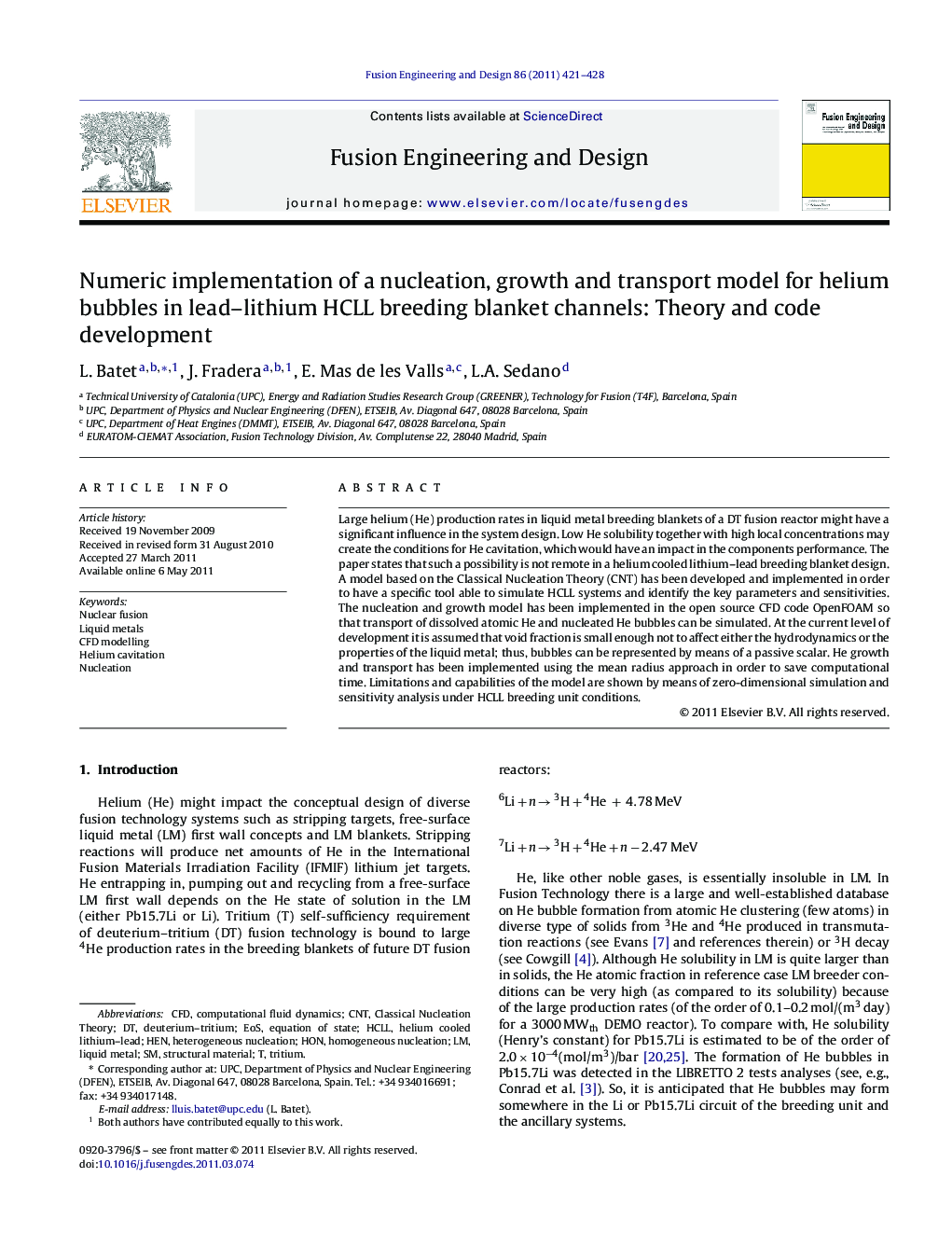| Article ID | Journal | Published Year | Pages | File Type |
|---|---|---|---|---|
| 272142 | Fusion Engineering and Design | 2011 | 8 Pages |
Large helium (He) production rates in liquid metal breeding blankets of a DT fusion reactor might have a significant influence in the system design. Low He solubility together with high local concentrations may create the conditions for He cavitation, which would have an impact in the components performance. The paper states that such a possibility is not remote in a helium cooled lithium–lead breeding blanket design. A model based on the Classical Nucleation Theory (CNT) has been developed and implemented in order to have a specific tool able to simulate HCLL systems and identify the key parameters and sensitivities. The nucleation and growth model has been implemented in the open source CFD code OpenFOAM so that transport of dissolved atomic He and nucleated He bubbles can be simulated. At the current level of development it is assumed that void fraction is small enough not to affect either the hydrodynamics or the properties of the liquid metal; thus, bubbles can be represented by means of a passive scalar. He growth and transport has been implemented using the mean radius approach in order to save computational time. Limitations and capabilities of the model are shown by means of zero-dimensional simulation and sensitivity analysis under HCLL breeding unit conditions.
